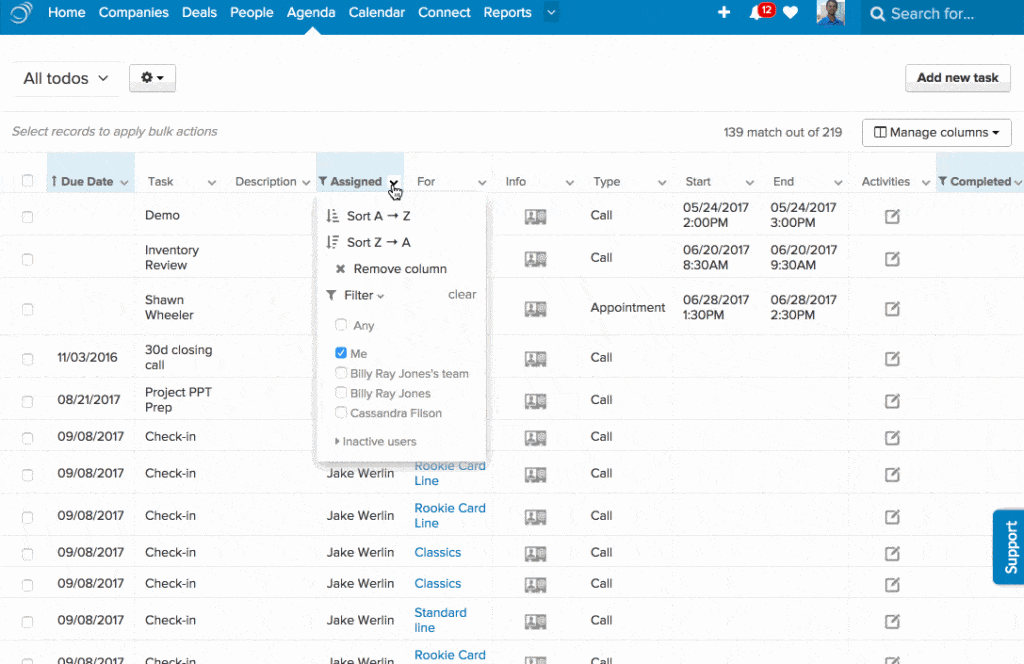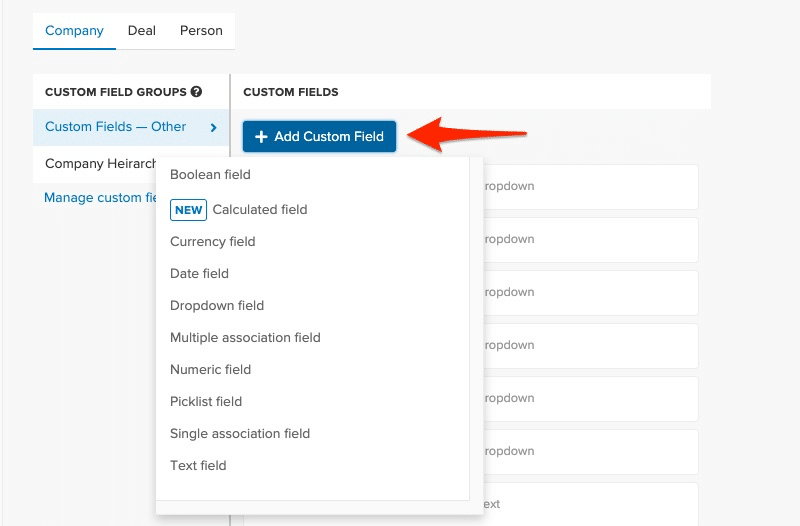There is nothing worse than walking out of a sales meeting with a client and thinking, “Well, that could have gone better.” Maybe the conversation went off track, the client left with more questions than answers, or maybe, despite doing your best, nothing really moved forward.
Ineffective sales meetings waste time, create confusion, and chip away at client trust. And then there are the lost hours your team won’t get back. Whether you’re in construction, professional services, or agencies, knowing how to run effective sales team meetings can win deals and keep projects on track.
In this article, we will walk through the best practices for sales team meetings to help you lead sales meetings that are clear, productive, and client-focused. Plus, use our meetings agenda template to keep your meetings on track.
How to Conduct Effective, High-Impact Sales Meetings
What to Prepare Before the Meeting
1. Define the Purpose of the Sales Meeting
Many times, employees or even managers feel that the meetings are a waste of time. You should avoid organizing a meeting that will be just another thing to do. Instead, you want a spark, a way to motivate and engage your sales team.
The first step is to define the purpose of the sales meeting. With the set goal, participants can easily visualize and prepare for the meeting. The ideas of the meeting could range from an update on the project, through an upcoming product launch to reviewing the result of the finished task.
2. Set an Agenda for Your Meeting
That brings us to the agenda, which has connections to two essential meeting issues: timing and purpose.
Once you have a purpose and weekly sales meeting ideas, the detailed plan will help the team prepare for the meeting. Keeping a tight schedule will ensure that the allocated meeting time won’t be breached. It’s essential to keep the meeting within 60 minutes since the focus and attention of the team will drop off after half an hour.
Additionally, a fruitful sales meeting lets you control the narrative while still keeping the prospect’s needs at the center — and for that, you need a clear agenda. Without one, conversations go off track, important topics may be skipped, and both parties are left wondering what was actually accomplished.
So, dedicate some time to creating a meeting agenda early on. For that, you need:
- Meeting purpose
- Participants
- Discussion points
- Expected contributions
How do you get this data? A reliable CRM system will help you here. Instead of scrambling through email threads or past meeting notes, a well-maintained CRM gives you instant access to client history, recent activity, open deals, and contact roles.
For example, Pipeline CRM offers customizable data fields you can tailor to capture business-specific information like client budget ranges, decision-maker roles, service needs, site location details, and even preferred communication channels. Learn more about how to prepare sales meetings using CRM data with Pipeline CRM.

Studies show that field service professionals spend 6 hours a week on admin tasks, which costs £600 every month for each person.
With Pipeline CRM’s sales automation, you can create tasks, update fields, and move deals between stages based on specific triggers like field updates or pipeline changes. That way, you always know the client’s needs and structure your agenda accordingly without worrying about stale data and manual errors.
3. Establish Expectations
How do you conduct a sales meeting and prevent it from descending into a chaotic and way to long mess? You have to establish expectations.
For the best productivity, all sales meeting members have to respect the agenda and be prepared. The other essential expectation is to recognize the time, both the one set for each point in the program and the time of fellow sales team members.
Leading a team meeting is a challenging task, and you have to let people ask questions while keeping in mind the schedule. You will need to balance between set timetable, give all the discussion points a certain amount of time, and keep up the pace.
Sometimes going off-topic can soften the atmosphere, but as a general rule, encourage your team to stay focused on the agenda.
Respecting the time set for each topic will result in a more productive meeting, and salespersons will have more time to be effective in their core business.
During Sales Meetings
4. Be Punctual
Without trying not to dwell too much into the time is money cliché, sales team time is significant to the company. No matter how vital meetings could be, it’s not more important than finding leads and turning them into customers. Starting and ending on time is the ultimate sign of respect.
Just like you expect team members to stick to the agenda and meet the timeframe, you will also set an excellent example if you are punctual. In the same way you respect the team, they should have the same relation to the prospects.
5. Ask for Individual Rep Updates
A sales meeting works best when it’s a two-way conversation. Make it a point to invite input from each representative in the room, whether they are from your team or the client.
Here are a few tips to encourage active participation:
- Ask open-ended questions that invite discussion instead of yes/no answers
- Rotate who speaks first to give everyone a chance to share without feeling overshadowed
- Use a round-robin format to ensure all voices are heard, especially quieter team members
To keep discussions focused and productive when multiple parties join the conversation, use your CRM data. Since it has updated deal information, client interactions, and next steps, you can reference this data during updates to guide conversations and identify any blockers and opportunities faster. This shared data helps your team stay aligned and make quicker and more informed decisions.
6. Make the Sales Meeting Engaging
US workforce is above average when it comes to working engagement, but with over 70% of employees not engaged in their workplace, the situation is still not very good. On the other hand, highly engaged teams show 21% greater profitability according to the Gallup.
As a team leader, you can manage the meeting climate to make it engaging.
The dull and routine meeting will squeeze juice from the attendees while injecting enthusiasm, and positive thinking can spark your sales team.
There are different approaches, but maybe the best is with saying “job well done.” It doesn’t have to be high praise, but a quick look on top performance in the last week and a bit of recognition can do wonders.
Acknowledging success can help with sales reps’ motivation to attend weekly meetings. Most meetings, emails, or lead-acquired milestone awards can even incite real competition among the sales team.
Another way to change the meeting routine is with new scenery. Instead of your classic meeting room, you could go to a cafe, local park, or have a lunch type meeting once in a while.
Please don’t make it always about powerpoint presentation, try to be innovative. Move around the room, write conclusions on the drawing board, let your team participate in the visualization of goals and findings.
You could divide your team into groups, and let them discuss minor issues and present them together to others.
Some clients require special treatment, and a meeting is a perfect setting to try acting out scenarios to discuss a possible approach. Some roleplaying will lighten the atmosphere and give guidance for the sales pitch.
7. Define Next Steps to Move Deals Forward
No matter how well you drive the conversation during meetings, the defining factor is whether you have clarity on what’s happening next, who is responsible for what, and when each action step is supposed to get done.
The best step to plan out and complete the next steps is to add them as actionable tasks in your CRM. This way, you can:
- Keep everyone accountable with clearly assigned tasks and due dates
- Maintain visibility across the team so nothing gets left out
- Stay on track with follow-ups and deal progression, thanks to automatic reminders and updates
- Create a clear audit trail, which is especially helpful when multiple reps and departments are involved
Pipeline CRM lets you tie tasks directly to deals, contacts, or projects. You can fully personalize your sales pipelines, from the stage names to add custom data fields and create multiple sales pipelines. This means your sales team can easily see what’s been promised, what’s pending, and what needs follow-up, without the added back-and-forth. Get the details on how to add custom data to Pipeline CRM.

After the Meeting
8. Distribute a Meeting Recap or Summary
Once the sales meeting wraps up, a quick, clear recap helps reinforce key takeaways and keeps everyone in sync, especially in fast-moving industries where details can get lost easily.
A good meeting summary doesn’t need to be fancy or time-consuming, but it summarizes the important points:
- Discussion topics
- Decisions made
- Next steps and who owns them
- Further questions or follow-ups
Send the recap via email or share it through your CRM or project management tool so it’s easy to access later. If you use Pipeline CRM, you can attach notes or link tasks directly to the deal or contact record, so everything stays in context.
Here are a few quick tips:
- Send the summary within 24 hours of the meeting
- Make it skimmable with bullet points
- Tag or CC everyone involved to keep communication transparent
- Add links to relevant files for easy reference
It’s a small habit that goes a long way in avoiding miscommunication and keeping deals moving forward.
Why Sales Meetings Need to Be Effective
Whether you have online or in-person sales meetings, much still rides on human interaction when building meaningful client relationships, especially in service-based businesses. Let’s look at a few scenarios.
In construction, meetings typically happen on-site, surrounded by noise, distractions, and a dozen tasks competing for attention. It’s tough to have a focused conversation when someone’s backing up a forklift outside.
In professional services, your clients are often juggling packed schedules, and the last thing they want is a drawn-out presentation that doesn’t get to the point quickly. If a meeting doesn’t feel useful, they will mentally check out before you are even halfway through.
Plus, time is money. You are likely working on multiple projects, and every meeting that runs long or goes off-topic eats away your team’s productivity, billable hours, and client satisfaction. You also risk miscommunication, which can lead to lost deals, misaligned expectations, and costly rework down the line.
And most importantly, first impressions matter. A sloppy meeting sends the wrong signal. That’s why making sales meetings more productive is more than just saving time. It’s about making every decision count.
Common Sales Meeting Mistakes to Avoide
1. Winging It Without a Plan
In construction or field-based services, showing up without a clear agenda wastes precious chunks of your already limited time to convince the prospect. You are trying to communicate your value in a potentially noisy and crowded area, which makes it even more difficult.
Without structure, conversations get derailed, and important details get missed. So always walk in with a meeting plan, even if it’s a short one.
2. Overloading the Discussion With Irrelevant Info
Long-winded updates and bloated presentations can make clients tune out. Instead, tailor your updates to what matters most to them. Use your CRM to pull relevant data, see how your product solves their specific problems, and keep your proposal crisp and customer-centric.
3. Skipping the Meeting Follow-Ups
When you juggle multiple clients, post-meeting follow-ups become an afterthought. It’s easy to forget or procrastinate, but it can cost you valuable prospects. Failing to confirm next steps and recap the conversation can lead to missed deliverables and client frustration. Always summarize outcomes and assign tasks immediately in your CRM or shared workspace.
Sales Meeting Agenda Template
Now you know how to run a successful sales meeting and common mistakes to avoid, here’s a meeting agenda template ready for you to use. Tweak the content to match your unique meeting needs.
Sales Team Meeting Agenda Template
Attendees:
Meeting summary:
1. Short introduction
2. Walk everyone through the meeting goals
3. Deal status update
4. Client feedback and discussion
5. Next steps and action items
6. Summarize and confirm
|
Use CRM to Help You Prepare, Record, and Follow Up Sales Meetings
When you show up prepared for a sales meeting, keep things focused, and follow through, you build trust and keep momentum. This means:
- Set a definite purpose for the meeting
- Create a meeting agenda outlining the participants, location, scope, and talking points
- Make sure you clarify expectations early on
Also, be on time, ask for individual input, but keep the conversation focused and define the next steps. Share the recap within 24 hours to highlight the progress you made.
Finally, choose a reliable, customizable CRM that helps you stay organized before, during, and after every client meeting. Pipeline CRM offers all the essential sales tools to keep conversations focused and deals moving forward.
Want to turn every client meeting into real progress instead of just another calendar invite? Start your 14-day free trial with Pipeline CRM today!



